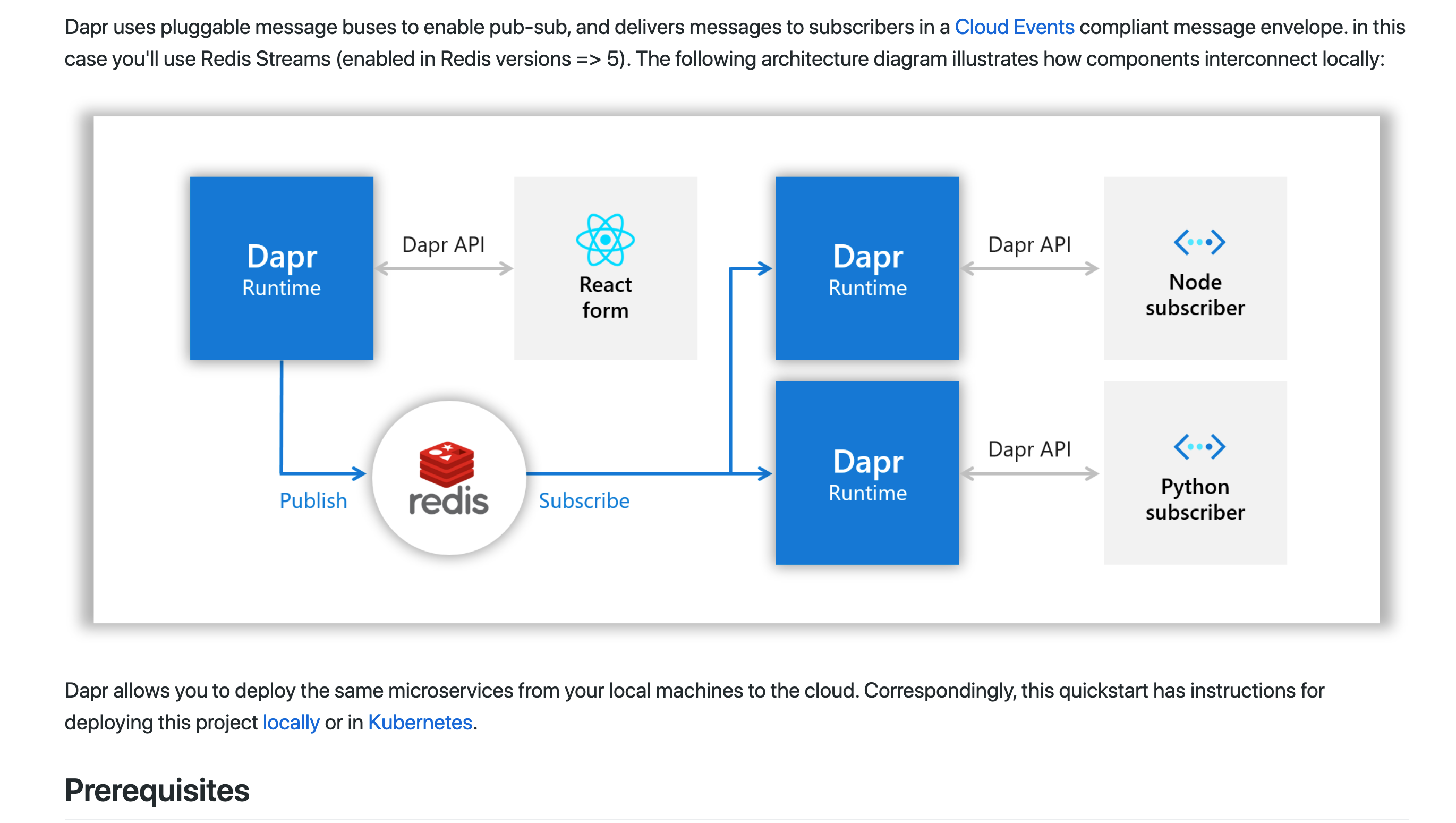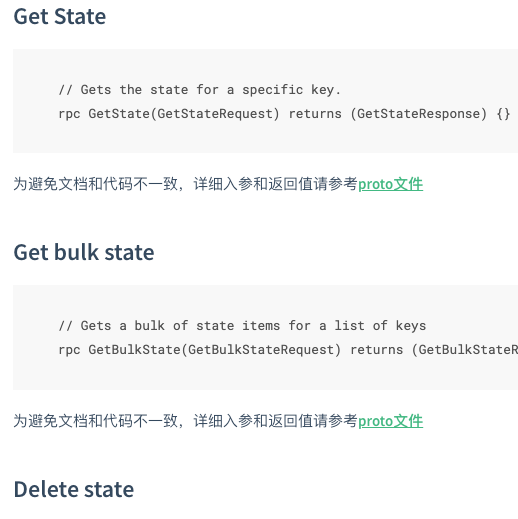新增API时的开发规范
感谢您对Layotto的支持!
本文档描述了如何设计并实现新的Layotto API。Layotto用Go语言编写,如果您对Go语言不熟悉可以看下Go教程 。
在开发新API的时候,可以参考已有的其他API的代码、文档,这会让开发简单很多。
Q: 为啥要制定该规范?
A: 目前缺少使用文档,用户不好用,例如:
代码缺少注释,感兴趣的贡献者看不懂,例如 https://github.com/mosn/layotto/issues/112
旧文档和注释补起来太慢,希望今后开发的新功能有这些。
Q: 遵循规范太麻烦了,会不会让想贡献代码的同学望而却步?
A: 本规范只限制“新增Layotto API的pr需要有哪些东西”(比如新设计一个分布式自增id API) ,其他pr比如新开发一个组件、新开发一个sdk都不需要遵循本规范,没这么复杂,足够自由
太长不看
开发前先提案,提案要详细
开发时要写4个给用户看的文档
- Quick start
- 使用文档
- API通用配置
- 组件配置
不用写设计文档,但是proto API和组件API要写详细注释,注释 as doc
新增API的pr要两个人code review,后续有机器人了可以一个人cr;其他pr随意
一、向社区发布API提案,经过充分讨论
1.1. 发布详细的提案
1.1.1. 为什么提案要详细
如果提案粒度太粗,其他人评审时可能没啥好评的,发现不了问题;
评审的目的是集思广益,大家一起帮忙分析当前的设计存在的不足,尽早暴露问题,免得以后返工。
1.1.2. 提案的内容
提案需要包含以下内容:
- 需求分析
- 为什么要做这个API
- 定义需求的边界,哪些feature支持,哪些不支持
- 市面上产品调研
- grpc/http API设计
- 组件API设计
- 解释你的设计
一个优秀的提案示例:https://github.com/dapr/dapr/issues/2988
1.2. 提案评审
简单的API发出来后大家文字讨论即可;
重要或复杂的API设计可以组织社区会议进行评审。
二、开发
2.1. 代码规范
2.2. 测试规范
- 有单元测试
- 有client demo,可以拿来做演示、当集成测试
2.3. 文档规范
原则:需要写给用户看的文档;至于给开发者看的设计文档,因为时间长了后可能过期、和代码不一致,可以不写,通过贴proposal issue的链接、在代码里写注释来解释设计。
2.3.1. Quick start
需要有:
- 这API是干嘛的
- 这个quickstart是干嘛的,想实现啥效果,最好有个图解释下
- 操作步骤
正例:Dapr pub-sub quickstart 在操作之前贴图解释下要做什么事情

反例:文档只写了操作步骤1234,用户看不懂操作这些想干啥
2.3.2. 使用文档
文档路径在"用户手册--接口文档"下,例如 State API的见 https://mosn.io/layotto/docs/api_reference/state/reference
调研发现Dapr的使用文档较多,比如光State API就有:
https://docs.dapr.io/developing-applications/building-blocks/state-management/
https://docs.dapr.io/reference/api/state_api/https://docs.dapr.io/operations/components/setup-state-store/
https://docs.dapr.io/reference/components-reference/supported-state-stores/
我们处于项目早期,可以轻一些
需要有:
what.这个API是啥,解决啥问题
when.什么场景适合用这个API
how.怎么用这个API
- 接口列表。例如:

列出来有哪些接口,一方面省的用户自己去翻proto、不知道哪些是相关API,一方面避免用户产生"这项目连接口文档都没有?!"的反感
- 关于接口的出入参:拿proto注释当接口文档
考虑到接口文档用中英文写要写两份、时间长了还有可能和代码不一致,因此建议不写接口文档,直接把proto注释写的足够详细、当接口文档。例如:
// GetStateRequest is the message to get key-value states from specific state store.
message GetStateRequest {
// Required. The name of state store.
string store_name = 1;
// Required. The key of the desired state
string key = 2;
// (optional) read consistency mode
StateOptions.StateConsistency consistency = 3;
// (optional) The metadata which will be sent to state store components.
map<string, string> metadata = 4;
}
// StateOptions configures concurrency and consistency for state operations
message StateOptions {
// Enum describing the supported concurrency for state.
// The API server uses Optimized Concurrency Control (OCC) with ETags.
// When an ETag is associated with an save or delete request, the store shall allow the update only if the attached ETag matches with the latest ETag in the database.
// But when ETag is missing in the write requests, the state store shall handle the requests in the specified strategy(e.g. a last-write-wins fashion).
enum StateConcurrency {
CONCURRENCY_UNSPECIFIED = 0;
// First write wins
CONCURRENCY_FIRST_WRITE = 1;
// Last write wins
CONCURRENCY_LAST_WRITE = 2;
}
// Enum describing the supported consistency for state.
enum StateConsistency {
CONSISTENCY_UNSPECIFIED = 0;
// The API server assumes data stores are eventually consistent by default.A state store should:
//
// - For read requests, the state store can return data from any of the replicas
// - For write request, the state store should asynchronously replicate updates to configured quorum after acknowledging the update request.
CONSISTENCY_EVENTUAL = 1;
// When a strong consistency hint is attached, a state store should:
//
// - For read requests, the state store should return the most up-to-date data consistently across replicas.
// - For write/delete requests, the state store should synchronisely replicate updated data to configured quorum before completing the write request.
CONSISTENCY_STRONG = 2;
}
StateConcurrency concurrency = 1;
StateConsistency consistency = 2;
}
这就要求proto注释里写清楚:
- 是必传参数还是可选参数;
- 解释这个字段啥含义;光解释字面意思是不够的,要解释背后的使用机制,比如上面的consistency和concurrency要解释用户传了某个选项后,服务器能提供什么样的保证
(consistency和concurrency上面的注释其实是我把Dapr文档上的描述精简后粘过来的,省了写双语文档)
- 注释讲不清楚的,在文档上解释
why.为什么这么设计
有设计文档的话贴个文档链接,没文档的话贴个proposal issue链接
2.3.3. 介绍API通用配置的文档
例如https://mosn.io/layotto/docs/component_specs/state/common
- 配置文件结构
- 解释这个API的通用配置,比如keyPrefix
2.3.4. 介绍组件配置的文档
例如https://mosn.io/layotto/docs/component_specs/state/redis
- 这个组件的配置项说明
- 想启动这个组件跑demo的话,怎么启动
2.4. 注释规范
proto注释 as doc
见上
组件API 注释 as doc
如果不写双语设计文档,那么组件API的注释要承担设计文档的作用(向其他开发者解释)。可以贴下proposal issue的链接
判断写得好不好的标准是"发出去后,社区爱好者想贡献组件的话,能否不当面提问、自己看项目就能上手开发组件"
如果觉得注释解释不清楚,就写个设计文档,或者补充下proposal issue、写的更详细些吧
其他注意事项
确保没有中文注释;
不用写无意义注释(把方法名复述一遍),比如:
//StopSubscribe stop subs
StopSubscribe()
三、提交pull request
3.1. 不符合开发规范的pr不可以合并进主干
3.2. cr人数
新增API的code review需要两个人review,后续有机器人自动检查后改成1个人review。
其他pull request的cr人数随意,不做约束。